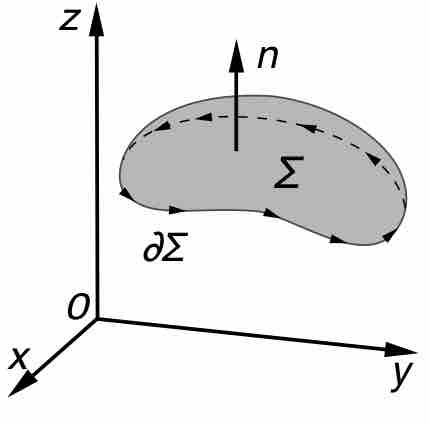Consider a vector field
Alternatively, if we integrate the normal component of the vector field, the result is a scalar. Imagine that we have a fluid flowing through
This illustration implies that if the vector field is tangent to

Kelvin-Stokes' Theorem
An illustration of the Kelvin–Stokes theorem, with surface
The cross product on the right-hand side of this expression is a surface normal determined by the parametrization. This formula defines the integral on the left (note the dot and the vector notation for the surface element).
Example
An electric field from a point charge (
where